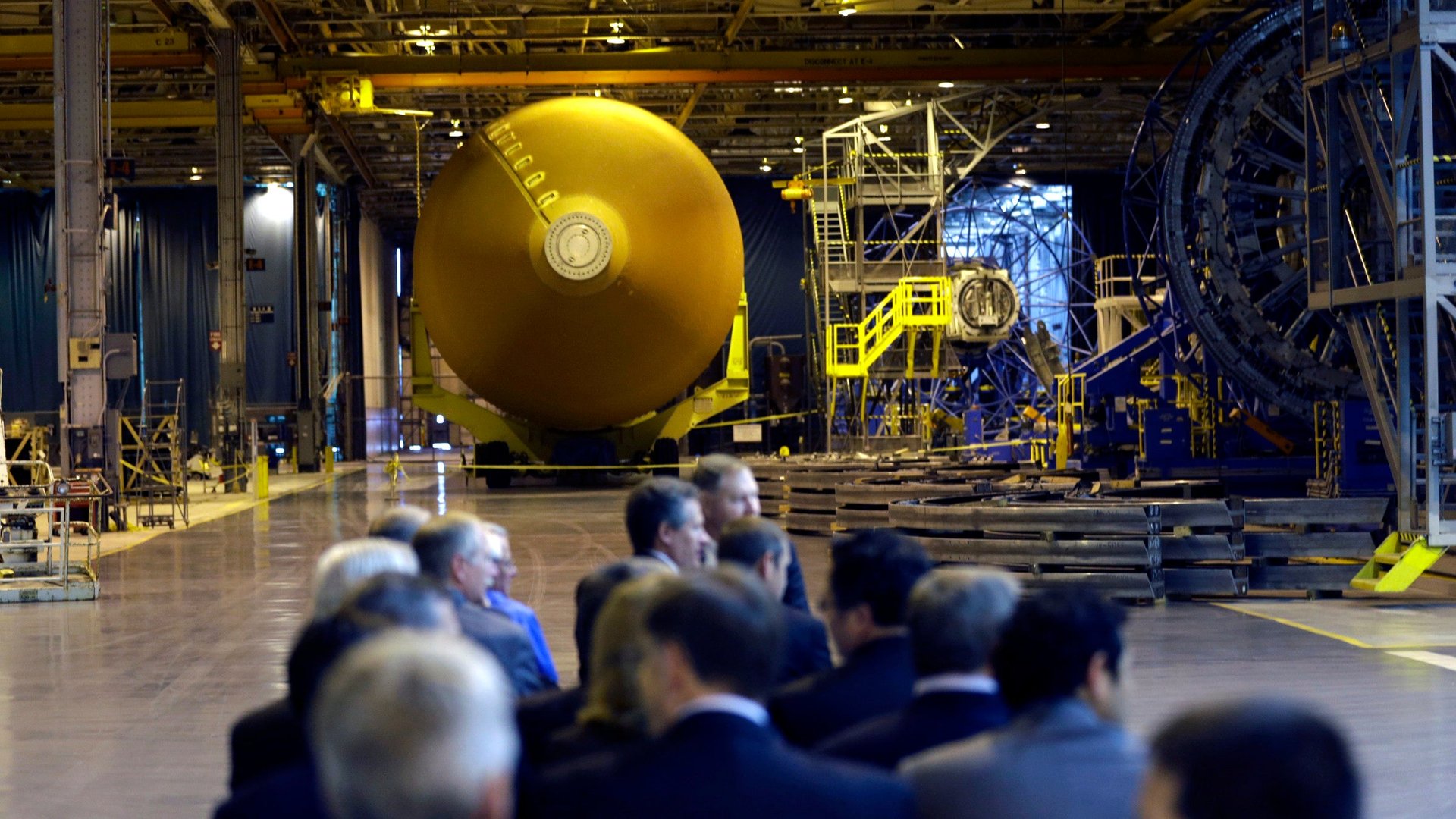NASA won’t rush astronauts back to the moon to please Donald Trump
In February, at the behest of the White House, NASA said it would consider adding two astronauts to the first integrated launch of its new Space Launch System rocket and Orion space capsule, planned for 2018. That NASA would even try to accommodate US presidential Donald Trump’s hope to see human passengers on what was meant to be an unmanned mission surprised many observers, given NASA’s traditionally deliberate and risk-reducing approach to human spaceflight.


In February, at the behest of the White House, NASA said it would consider adding two astronauts to the first integrated launch of its new Space Launch System rocket and Orion space capsule, planned for 2018. That NASA would even try to accommodate US presidential Donald Trump’s hope to see human passengers on what was meant to be an unmanned mission surprised many observers, given NASA’s traditionally deliberate and risk-reducing approach to human spaceflight.
But it’s not going to happen.
Robert Lightfoot, the agency’s acting director, said today (May 12) that a study found that putting crew members on the first mission, known as EM-1 or Exploration Mission One, was “technically feasible, as long as we had additional resources and schedule.” However, after discussions with the White House, Lightfoot said NASA and the new administration decided “that the baseline plan we had in place was the best way for us to go.”
Reading between the lines, it seems that the additional funding and time needed outstripped any desire to send humans into space during Trump’s first term. Doing so would have meant changes to the EM-1 rocket and spacecraft, which was planned to fly without humans, and solving engineering challenges, like the life-support system, that the agency had scheduled for the build out of the second, crewed exploration mission, called EM-2.
To add astronauts to the mission would have cost an additional $600 to $900 million, for a program that will already cost $23 billion (pdf) by the time the first rocket takes off.
Lightfoot noted that the review “shined a brighter light on what we needed to do” to move the program, which began in 2010, forward. While rocket-building is often beset by delays, NASA has suffered a spate of plain old bad luck recently. A February tornado damaged a New Orleans facility where the rocket is assembled, and a construction accident last week irreparably damaged an oxygen tank intended for the EM-1 rocket. Those and other delays contributed to the movement of the inaugural flight from 2018 to 2019. Now it seems likely that EM-2 will be pushed past its 2021 launch date.
The Trump administration has teased space enthusiasts with big policy promises, particularly around public partnerships with private space companies. US vice president Mike Pence is said to be re-forming the National Space Council, a group intended to coordinate space policy across the government. This has yet to occur, though. Meanwhile, NASA is waiting to see who will be appointed the agency’s permanent director and how the agency will reconcile the budget proposed for 2018, which doesn’t resolve the awkward tension between exploration and the International Space Station.
Still, Trump himself seems eager to do something spectacular in space. In a recent conversation with an astronaut, Trump talked about the possibility of sending Americans to Mars by the end of a potential second term in office. Accomplishing such a voyage would likely mean spending huge amounts of money to accelerate NASA’s program, or hiring private companies like SpaceX, which say they can do the job more cheaply.
SpaceX, meanwhile, says it is currently planning to fly two space tourists around the moon in 2018. Though most expect that trip to face delays, too, it’s a fair bet that the private company’s passengers beat government astronauts back to lunar space.